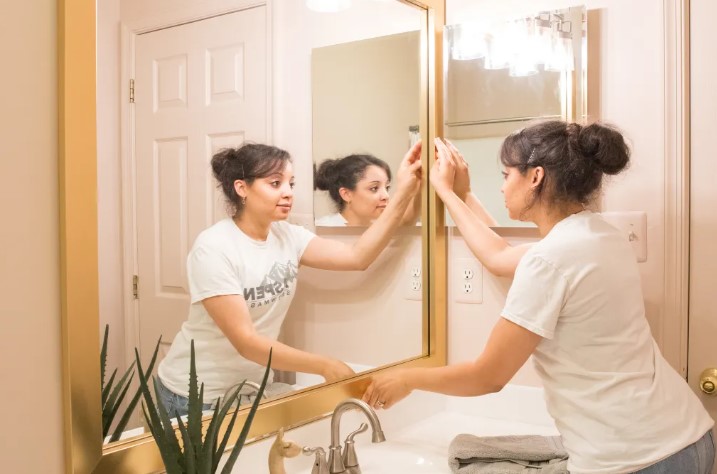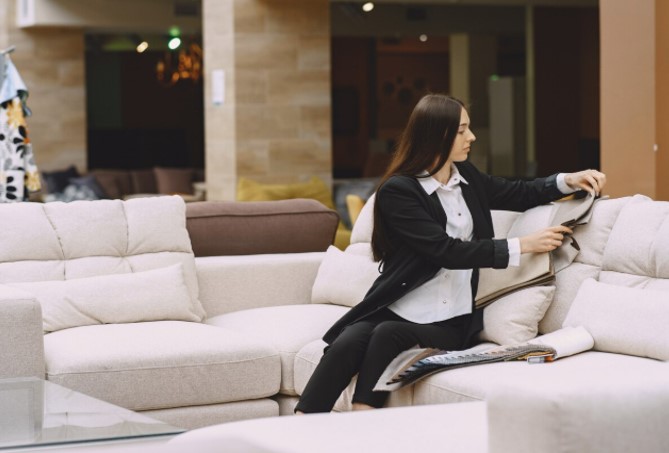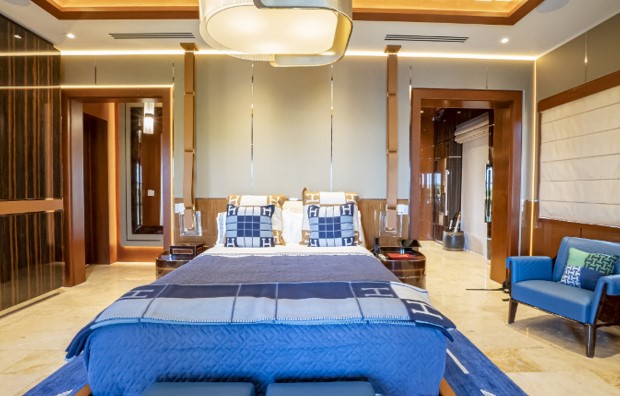New Hines HQ at Texas Tower focuses on modern design and workforce of

George Lancaster plucks small objects from the modern wood shelves lining the library at Hines‘ new headquarters in Texas Tower downtown and speaks of them as precious artifacts and mementos. One is the slide rule used by company founder, the late Gerald Hines, in his early years as a mechanical engineer and developer in Houston.
There are pieces of old Navajo pottery from a larger collection they had on display in Williams Tower, and a small note card listing Hines’ entire 1968 staff, just 32 employees. Hines was a photography buff, too, and his Leica and Lumix cameras sit among relics on the library shelves.
The firm today has a head count of 900 in Texas Tower, its world headquarters and the home of its Southwest regional office. Worldwide, Hines has nearly 5,000 employees.
MORE FROM DIANE COWEN: $40 million Menil Drawing Institute announced as finalist for prestigious architecture prize
Texas Tower, designed by Pelli Clarke & Partners architects, opened in late 2021 on the block of Texas Avenue that used to be home to the Houston Chronicle, which has since moved to the southeast corner of U.S. 59 and Loop 610 interchange. Since then, Hines has been finishing out its own office space on six floors of the high-rise — floors 30 through 35, all with spectacular views of downtown and beyond — with modern furnishings and high-tech workspaces.
In September, after working from Williams Tower for 40 years, the Hines staff started moving into Texas Tower, most working a hybrid schedule of three or four days in the office.
This is a carousel. Use Next and Previous buttons to navigate
“This is so efficient that it’s a lot more productive. We’re doing more with less, said Lancaster, Hines’ senior vice president and global head of marketing and communications. “The most significant feature is that because of the way the old offices were built, there’s a 75 percent increase in common spaces, and that’s the secret sauce of the future. Clients all over the world are asking us how to activate space and motivate people. This is one way we can lead by example.”
In Williams Tower, Hines staffers initially occupied four floors, but over time, the staff grew to use nine different floors. Now they’re all together in Texas Tower in a configuration that likely speaks particularly to the millennials on staff.
The 30th floor is called The Landing and houses a reception area, the beautiful library and a common gathering space called The Mix, where staffers can go for lunch or for gatherings — such as the big group breakfast they have on Thursday mornings, the occasional Taco Tuesday or staff happy hour gatherings. In Williams Tower, those were referred to as “Mix it Up,” which has been shortened to “The Mix” in this new building.
On each floor, furnishings and finishes are beautiful but not overdone. And while they’re comfortable and cozy, you won’t mistake them for your own living room or dining room, though you may wish you had some of the modern furniture there, too.
Much square footage is devoted to collaboration spaces, from smaller and larger open areas where people can meet casually, to conference rooms, small dining spaces and even a rec room, where co-workers can talk about work or life while playing foosball or pingpong.
An eight-person in-house design committee — which included Lancaster, as well as two Hines family members, co-CEO Laura Hines-Pierce and her brother Adam Hines, who works in the firm’s capital markets division — met in a weekly phone call with designers from New York-based Architecture + Information, which handled interiors for Hines.
Eliane Maillot, associate principal and studio director of A+I, said that planning for the Hines interiors began with interviews with employees and managers in 2019. Just a couple of weeks after they were done, the team paused to reevaluate as the pandemic brought normal business to a halt.
“Business has shifted and changed. We created a (conceptual) North Star that, ironically, survived the pandemic and became more resonant afterward, when we needed to create space around culture and create flexibility around areas of work,” Maillot said.
Workspaces are a combination of small offices or cubicles, and there are plenty of common areas where employees can go if they tire of their usual workspace. Offices were planned democratically, with every office the same size and no one getting exterior windows. Even the C-suite offices of co-CEOs Jeffrey Hines and Hines-Pierce are no bigger than anyone else’s.
The common areas are more important than ever with hybrid work schedules, Maillot said.
She invoked the design world’s newest buzzword — “resi-mercial” — in talking about how commercial spaces such as offices need to feel as comfortable and cozy as residential, a movement fast-forwarded by the pandemic.
“It’s as if you’re entering a hotel lobby, not a corporate office. We make it feel more comfortable with some aspects like home and some like a nice hotel,” she said. “What the pandemic helped is for it to not be unusual to get up from your desk and go somewhere else to work. The pandemic forced us to change our mentality of what constitutes a good place to work. It gave us more freedom.”
Every one of the Hines floors has offices and cubicles, but they also have small rooms that people could go to for conversations or more privacy. Public spaces are filled with banquettes sofas and chairs and are so attractive workers are drawn to them.
While the firm’s Williams Tower offices had plenty of old-school wood paneling, white oak is reserved for stairwell walls and elevator entrances here, in a more modern composition.
Gerald Hines may have died in 2020, but his presence is still felt in Texas Tower, where some of the tiniest details are a reminder of the company founder, who impressed upon his staff that even things such as how a doorknob feels in the hand matters. On each staircase, what otherwise would be a cold metal handrail is covered in soft, warm leather.
The 35th floor, dubbed “The Summit,” has an homage to Hines and his love of skiing. He and his wife had a vacation home in Aspen, and a photo of his favorite ski slope was enlarged and displayed mural size, wrapping around the walls of a training room.
The main boardroom — the Gerald D. Hines Boardroom on the 33rd floor — was created for international meetings, with multiple screens on the walls so people in far-flung offices can join in. At the big, marble-topped table, pop-up microphones are built into the table’s surface, allowing individuals to push a button and join the conversation, or push it back down to mute themselves. Banquettes on two sides of the room handle overflow seating.
Not only does Hines conduct business in this boardroom, but the company brings visitors through to show how spaces can adapt with technology.
“It’s so fun to be in a global meeting here,” Lancaster said. “Let’s face it, it’s a hybrid world. We’re back to the office three-plus days a week. It was important to acknowledge there’s a virtual world and a physical world and what are the strengths and limitations of each?
“Clients, people who own buildings and occupiers ask us what the future looks like and how we support an experiential place. This is one of the ways we’re demonstrating and educating people.”






























